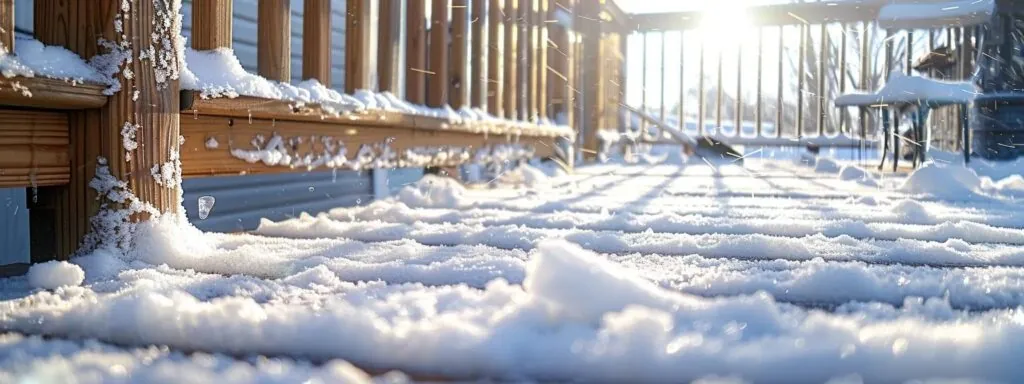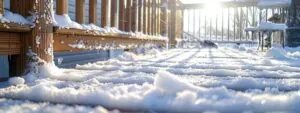Deck maintenance in Michigan can be challenging due to harsh weather conditions. This article provides practical tips for caring for your deck to ensure its longevity against snow, rain, and sun. It includes a seasonal maintenance checklist and discusses the importance of selecting materials that can withstand Michigan’s climate changes. Proper upkeep is essential for extending the life of your deck, especially when it is exposed to a range of environmental factors day after day.
If you are dealing with the demands of maintaining a deck through icy winters and humid summers, this guide offers straightforward solutions for effective deck care and lasting results. With proper care and the right maintenance routine, your Michigan deck can look like new for years to come! Here is what you need to know to get started.
The Impact of Michigan’s Weather on Decks
Michigan’s climate poses unique challenges for deck upkeep, impacting longevity and appearance. With extreme temperature fluctuations, heavy snowfall, and high humidity, understanding these factors is essential for effective deck maintenance and protection. Let’s take a closer look at how these weather factors can affect your deck design and maintenance plans:
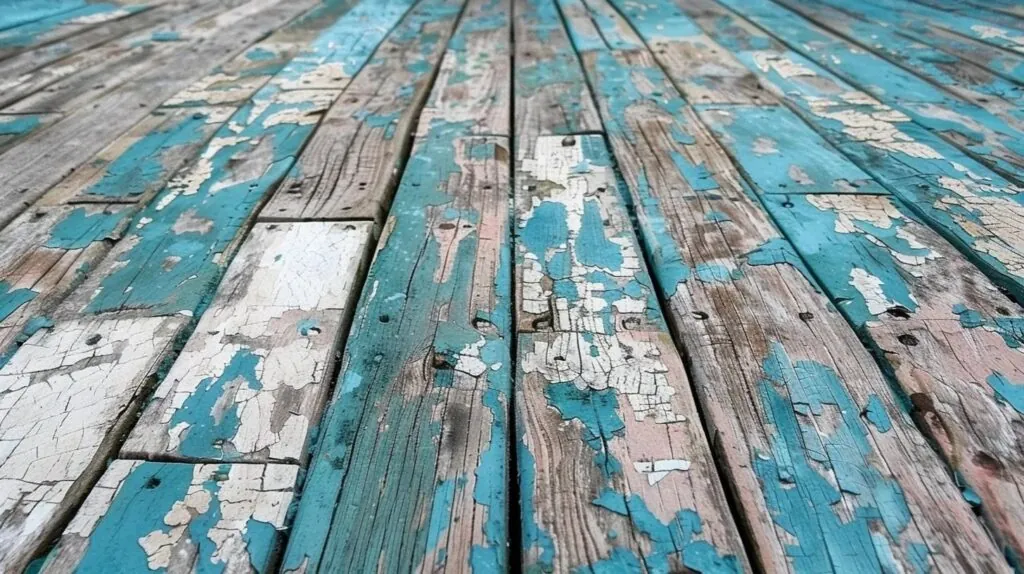
1. Fall and Winter Weather Challenges
Michigan’s winters can significantly damage decks due to freeze-thaw cycles, which cause cracking and splintering. Snow and ice accumulation lead to moisture penetration that can worsen over time. Diligent maintenance is necessary to prevent long-term deterioration. Understanding these winter challenges is crucial for protecting your deck and ensuring its durability against harsh weather conditions. For more insights on maintenance and protection, visit expert deck repair and restoration services.
Cold Weather Maintenance Tips:
Remove snow regularly using a plastic shovel to avoid scratching the surface. Clear standing water to minimize ice formation and wood rot. Additionally, a water-repellent sealant should be applied in the fall to protect the deck from moisture and cold damage. These steps will help extend the deck’s lifespan and maintain its appearance.
2. Spring and Summer Heat and Humidity
Summer brings higher temperatures and increased humidity, creating unique challenges for deck maintenance. Heat can cause deck materials to expand, while moisture promotes mold and mildew growth. The build-up of pant materials and debris can also increase moisture impacts on the deck surface as well. Regular cleaning is essential; sweeping away debris and washing with mild soap helps prevent buildup and wood decay.
Warm Weather Maintenance Tips:
Inspect the deck for signs of wear or damage as part of your normal deck maintenance. If the sealant is deteriorating, reapply sealant to protect against sun exposure and moisture. Additionally, ensuring good airflow around the deck and providing shade can reduce temperature stress on materials, enhancing durability and creating a more comfortable outdoor space.
II. Seasonal Deck Maintenance Checklist
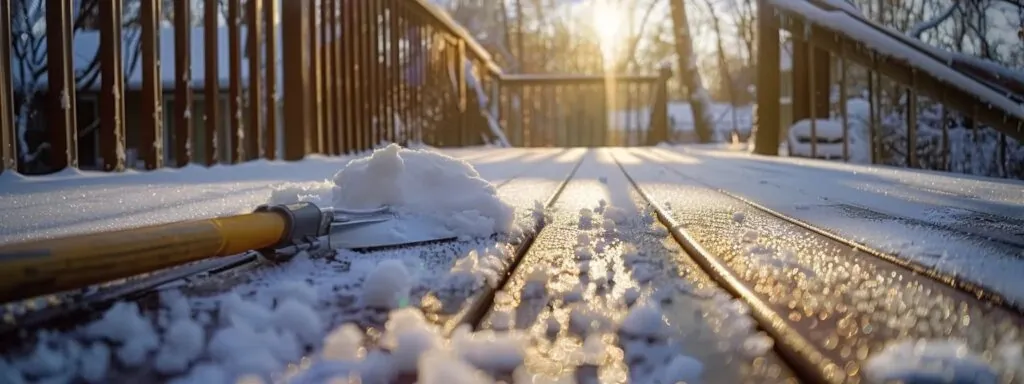
Maintaining your deck through Michigan’s varied weather requires a seasonal routine. Each season has specific tasks to keep your deck sturdy and visually appealing all year. Knowing what to do at what time of year can help extend the lifespan of your deck and protect its strength, durability, and aesthetics for years to come.
A. Spring
As winter ends, inspecting your deck for damage from the cold is essential. Look for signs like splintering wood or loose fasteners. Prompt repairs help maintain deck integrity and prevent further issues. A thorough cleaning removes dirt, grime, and winter residues that can corrode materials. Use a gentle cleaner and soft brush to avoid damage. Regularly checking for rot or structural weaknesses ensures safety and extends your deck’s life.
B. Summer
Summer heat and humidity can wear out decks, so reapplying sealant is crucial. A high-quality sealant protects against UV rays and prevents discoloration and warping. Trim back overhanging branches to enhance airflow and reduce moisture buildup to make the deck less prone to rot or mildew. Consistent deck maintenance during summer helps homeowners enjoy their outdoor spaces, ensuring the deck remains inviting and functional.
C. Fall
Falling leaves and debris can trap moisture against the deck in the fall, leading to wood rot. Regularly sweep away leaves and twigs to maintain your deck’s integrity. Check for loose boards and secure them to prevent damage from snow and ice. Consider applying a fresh coat of water-repellent sealant before winter. Also, store outdoor furniture to reduce weight on the deck during snowfall, keeping it functional for warmer months.
D. Winter
Snow removal is critical for deck preservation during Michigan’s winters. Quickly clear snow to prevent structural stress and damage. Use a plastic shovel to avoid surface scratches. For ice, choose a calcium chloride product instead of rock salt, which is gentler on materials. After snow removal, ensure no icy patches remain to prevent water seepage and rot. Proper drainage maintains decking durability, ensuring it is ready for spring.
III. Choosing the Right Deck Material for Michigan’s Climate
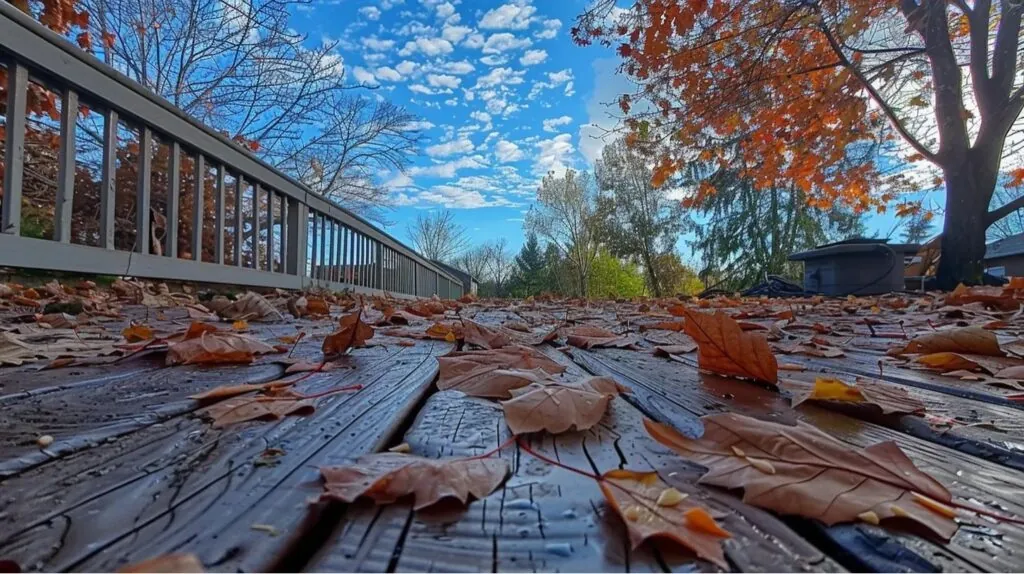
Choosing the right deck material is vital in Michigan, where weather rapidly changes from extreme cold to humid heat. Each material offers unique benefits suited to the state’s climate challenges. Here is what you should know about the most common decking material in Michigan:
A. Composite Decking
Composite decking is an excellent choice for Michigan homeowners seeking a durable solution to weather-related issues. Made from wood fibers and plastics, it resists rotting, splintering, and termites. Unlike traditional wood, composite requires less maintenance, eliminating the need for annual staining or sealing. Its resistance to warping and fading makes it ideal for Michigan’s extreme weather. Additionally, composite decking offers slip resistance, enhancing safety during wet conditions. With various colors and textures, it provides the aesthetic appeal of wood while ensuring long-lasting performance.
B. Pressure-Treated Wood
Pressure-treated wood is a popular option for Michigan decks due to its durability against temperature swings and moisture. This wood undergoes a treatment process that infuses preservatives, protecting it from decay, fungi, and insects. It is cost-effective and fits various budgets while maintaining the classic look of wood. Although it requires more maintenance than composite decking, proper care—including regular cleaning, staining, and sealing—can extend its life significantly. Its availability makes pressure-treated wood a practical choice for those prioritizing both quality and affordability.
C. Redwood and Cedar
Redwood and cedar are favored materials for decks in Michigan due to their natural resistance to decay and insects. These woods offer a beautiful, warm aesthetic that enhances outdoor spaces. Their natural oils act as preservatives, providing extra durability against moisture and temperature fluctuations. While redwood and cedar can outlast many other materials with proper care, they require regular maintenance to preserve their appearance and integrity. Cleaning and applying protective finishes are essential to shield against Michigan’s harsh weather, ensuring the longevity of these attractive decks.
IV. Protect Your Deck in Michigan’s Weather
Michigan’s weather requires a strategic approach to deck protection. Selecting materials like composite decking or pressure-treated lumber is crucial, as these options resist rot and decay. To maintain structural integrity through temperature shifts, invest in weather-resistant decking. Preventative maintenance is essential; sealing your deck with a quality water-repellent product before harsh weather can protect it from moisture damage.
Routine cleaning and inspection are critical for deck care, especially in a state like Michigan that has such extremes between warm and cool seasons. Regularly clearing debris like leaves and snow prevents decay, while frequent inspections can catch issues like splintering or weakened boards early. Addressing these problems promptly can prevent costly repairs later.
Adjustments to your yard can also enhance deck protection. Ensuring proper airflow around your deck and adding shade helps reduce heat stress and moisture buildup. These changes protect your deck and create a cooler, more enjoyable outdoor space that can withstand Michigan’s unpredictable weather.
Timely repairs and resealing are vital for extending your deck’s lifespan. Fixing loose boards and railings ensures safety while reapplying sealant, which creates a barrier against moisture and UV damage. These things go hand in hand with weather preparation and maintenance for any home deck construction. Committing to good maintenance practices lets you keep your deck functional and attractive despite Michigan’s challenging climate.
Conclusion
Michigan’s harsh weather, with icy winters and humid summers, stresses decks, making diligent maintenance essential. Choosing durable materials like composite decking or pressure-treated wood provides resistance to rot and decay. Regular cleaning, seasonal upkeep, and prompt repairs are crucial to preserving structure and aesthetics. Homeowners who prioritize these practices can ensure their decks remain safe and inviting outdoor spaces year-round. Do not leave your deck’s durability to chance in the summer and winter extremes- call your local Michigan decking pros today and develop a deck maintenance routine that fits your needs!
Frequently Ask Questions
How do you protect wood from outdoor weather?
To protect wood from outdoor weather, apply a weatherproofing sealer, stain, or paint that is designed for outdoor use. These coatings create a protective barrier against moisture, UV rays, and temperature changes. It’s also important to use pressure-treated wood or naturally weather-resistant woods like cedar, redwood, or teak for outdoor structures.
How do you maintain a weathered deck?
To maintain a weathered deck, start by cleaning it thoroughly with a deck cleaner or a mix of water and mild detergent. After cleaning, sand any rough or splintered areas. Once dry, apply a fresh coat of deck stain or sealer to protect the wood and restore its appearance. Regular cleaning and sealing, typically every 1-3 years, will help prolong the life of the deck.
What maintenance does a deck need?
A deck requires regular maintenance, including:
● Cleaning: Sweep debris and clean the surface regularly to prevent mold and mildew.
● Inspecting: Check for loose boards, nails, and screws, and repair any damage.
● Sealing or staining: Reapply a water-resistant sealer or stain every 1-3 years to protect against weather damage.
● Sanding: Sand any rough spots to prevent splinters.
How do I protect my deck from sun and rain?
To protect your deck from sun and rain, apply a UV-resistant stain or sealer. Look for products that offer both waterproofing and UV protection. You can also install a deck cover, awning, or pergola to shield it from direct sunlight and rain. Additionally, using outdoor rugs or furniture covers can help prevent surface damage.
What is the best way to weatherproof decking?
The best way to weatherproof decking is by applying a high-quality water-repellent sealer or stain that is designed for outdoor use. For added protection, choose a product that includes UV inhibitors to prevent sun damage and mildew-resistant additives. Regular maintenance, such as cleaning and reapplying sealer every couple of years, is essential for long-term weatherproofing.
What is the best weather to clean a deck?
The best weather to clean a deck is on a dry, overcast day with mild temperatures, ideally between 60°F and 80°F (15°C and 27°C). This type of weather allows the deck cleaner to work effectively without drying too quickly, which can happen under direct sunlight or in high heat. Avoid cleaning on rainy or extremely humid days, as the wood may not dry properly afterward, which could affect the application of sealers or stains. Additionally, make sure to clean the deck on a day when rain is not expected for at least 24-48 hours to allow it to dry thoroughly.
